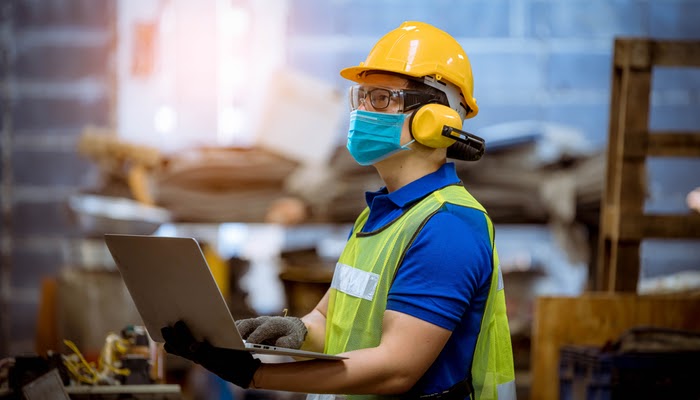After a year marked by a still-ongoing health crisis, special attention is paid to all the ways we can make our workplaces and homes cleaner and safer for our health. However, keeping everything visibly clean and maintaining personal hygiene is not enough in an industrial setting. Basic janitorial services should be complemented with industrial hygiene, otherwise known as occupational hygiene.
Industrial hygiene is science. It deals with anticipating, identifying, evaluating, and controlling workplace hazards that may cause injury or illness. These hazards include a wide range of chemical, biological, physical, and ergonomic issues.
Employing an industrial hygienist to recognize and mitigate hazards in the workplace will have tremendous benefits for your business:
- Better worker health
- Increased productivity and potential
- Fewer absences due to illness or injury
- More efficient processes
- Lower personnel healthcare costs
Industrial Hygiene Control Methods
Engineering controls
The first control method to be considered in the process of evaluating or mitigating hazards is the equipment. The method includes confining or enclosing equipment, replacing toxic chemicals with safer ones, improving ventilation systems, installing Plexiglass barriers against respiratory infections, and more. Engineering controls are first considered because they tend to remove hazards directly from their source.
Work practice controlsWork practice control methods evaluate how a task is performed and whether there are ways to make it safer for the personnel. It can include changing task procedures to minimize exposure to hazards, providing supervision, introducing good housekeeping procedures, performing regular inspections to make sure everything is in working order, and more. Regulations regarding eating, drinking, smoking, applying cosmetics, and chewing tobacco or gum should also be implemented.
Administrative controlsAdministrative control methods primarily have to do with scheduling. If there are operations with high exposure potential, you will want to schedule as few workers as possible to be present. This is a way of minimizing exposure levels.
Personal protective equipment (PPE)While PPE is essential, it alone is not enough to maintain high hygiene levels without other workplace methods. In emergencies - such as a global pandemic of a respiratory infection - respiratory PPE must be used. Some workstations may also require additional PPE in safety goggles, helmets, gloves, safety shoes, and protective clothing.
PPE needs to be fitted for each worker individually and refitted at regular intervals. It should be worn with care, adequately maintained, and replaced if necessary.
Takeaway
Implementing a successful industrial hygiene program dramatically reduces the risk of infection for your personnel. It lowers the risk of a workplace injury or illness, and it also reduces costs for the organization.
An excellent industrial hygiene program consists of evaluating the following key components:
- Ergonomics
- Indoor air quality
- Chemical, radiation, and biological hazards
- Noise hazards
- Temperature hazards
The end goal of any industrial hygiene program is to eliminate or control such hazards. For performing a comprehensive industrial hygiene assessment, assessment software will be of great help.
Take a look at The Checker Pro, a software solution for any device that will allow you to create your checklists of everything that needs to be included in an industrial hygiene program.











